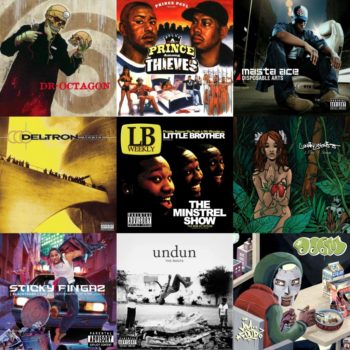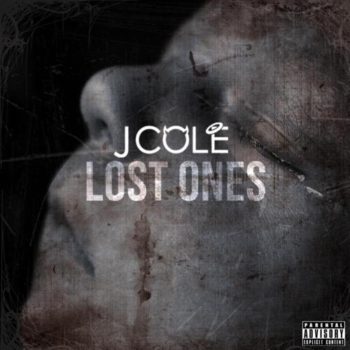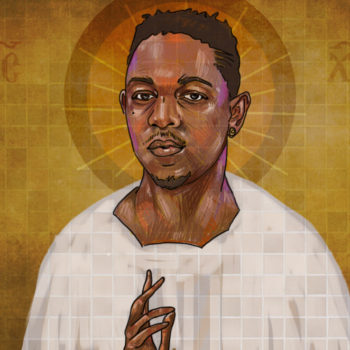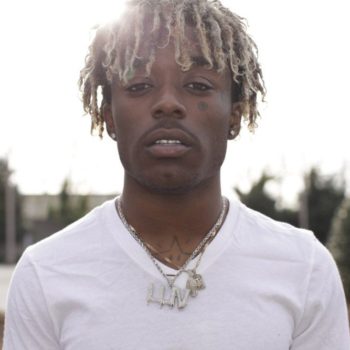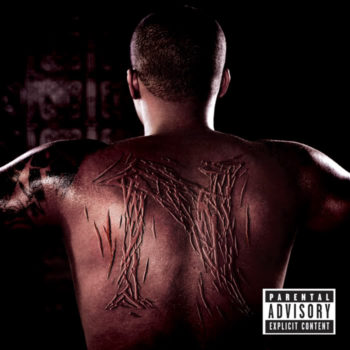Donald Glover is an artistic, creative juggernaut. In 2016, he had what was arguably the most commercially successful and critically acclaimed year of his career. Not only did his new FX series “Atlanta” win two Golden Globes and two Writer’s Guild Awards, but Glover also released another studio album under his emcee moniker, Childish Gambino, with “Awaken, My Love!” The album was received to high critical acclaim and birthed the hit single “Redbone.”
But “Awaken, My Love!” sounds nothing like any of the other projects that Glover has done before. When you listen to “Awaken,” you are reminded of James Brown, of Jimi Hendrix, of Sly and the Family Stone, George Clinton and Parliament Funkadelic, of Bootsy Collins and his Rubber Band, and Prince. You get shades of classic funk and rock albums like “Stand!,” “Maggot Brain,” “Cosmic Slop,” and “Electric Ladyland.”
And that’s clearly the method to his madness: Glover doesn’t want to be boxed into any little compartment when it comes to his acting, writing or music. So he purposely created something that was completely different than the wounded millennial first world problems on “Because the Internet” or the conceptual diversions of “STN MTN/Kauai.”
Of course, the idea of an artist like Childish Gambino releasing and album like “Awaken, My Love!” after finding some success with one style or another is nothing new. It’s an idea that’s existed in hip-hop for decades. Over the years, there have been plenty of albums by hip-hop artists that are deemed to not be “hip-hop,” or that are categorized as not sounding like a traditional hip-hop album, be they debut albums or albums by established artists that were born from a sense of wanting to try something new.
Moments in music and albums such as “Awaken, My Love!” are vital to both the preservation and the forward motion of hip-hop music and culture. They help hip-hop from staying in a state of stagnation. They prevent things from becoming boring. They make both hip-hop artists and fans feel caught off guard, sit up and take notice, and search out and discover new sounds, unfamiliar territory and new possibilities. And they inspire and give birth to other artists and movements.
Without Kanye going left on “808’s & Heartbreak,” how would Drake, Kid Cudi or Chance the Rapper fit into today’s hip hop landscape? Without N.E.R.D. giving us “In Search of…,” would we have a Tyler The Creator or an Earl Sweatshirt to speak of? Not even a little bit.
To put things into greater context, let’s look back at a few albums by hip-hop artists considered to not sound like or, by some fans, even be “hip-hop” by certain standards, and examine their importance and impact on the forward motion of the music.
“Paul’s Boutique” – The Beastie Boys (1989)
 After “Licensed to Ill,” everybody likely expected the Beastie Boys to follow up with an album just as brash. Well, that didn’t happen.
After “Licensed to Ill,” everybody likely expected the Beastie Boys to follow up with an album just as brash. Well, that didn’t happen.
Instead, listeners were treated to a record filled with psychedelic hip-hop that was even more rock influenced and hazy. It’s said that “Paul’s Boutique” is a landmark in the art of hip-hop sampling, which is ironic for an album that sounds the way that it does. But everyone from Chuck D to the RZA has pointed to it as a source of inspiration.
They may not have meant it to be, but the Beastie Boys’ second album set them up as ambassadors between worlds of musical genres, a wave that they would ride for the rest of their career.
“The Miseducation of Lauryn Hill” – Lauryn Hill (1998)
“The Miseducation of Lauryn Hill” is already a divisive album on a number of different fronts. But one of the greatest debates that still rages on is whether Lauryn’s debut is considered to be hip-hop or straight-up R&B.
And to complicate things further, there are a number of musical influences found throughout the album, from acoustic and electric rock to reggae to doo-wop. Whether you consider Lauryn’s first album hip-hop, R&B, a mash up of the two or anything else, there’s no denying that it is still a landmark music moment to the hip-hop community.
“Deltron 3030” – Deltron 3030 (2000)
 Quite possibly hip-hop’s equivalent to a rock opera like “Tommy” by The Who, Deltron 3030 took the idea of the concept album for hip-hop and ran a marathon with it.
Quite possibly hip-hop’s equivalent to a rock opera like “Tommy” by The Who, Deltron 3030 took the idea of the concept album for hip-hop and ran a marathon with it.
It’s a futuristic jaunt through a future world set in the year 3030 where corporations rule everything. But the importance is in its influence. Remember DangerDoom’s 2005 album “The Mouse and the Mask” or 2013’s “Twelve Reasons to Die” by Ghostface Killah? You can thank the influence of Deltron 3030 for those conceptual gems.
Related: Top 15 Hip Hop Concept Albums
“In Search Of…” – N.E.R.D. (2002)
The Neptunes were go-to hip-hop hit makers by the time the 2000s rolled around, already having established themselves by crafting production for N.O.R.E., Ol’ Dirty Bastard, Kelis and, of course, Jay Z.
But when they formed N.E.R.D., their focus shifted to funk, R&B and electric rock. The music was a vast departure from, say, the production on “Superthug.”
But N.E.R.D. helped to start a number of trends in music with the album, including the skateboarder style that would begin to be seen in throughout hip-hop in coming years, from Lupe Fiasco’s “Food and Liquor” to West Coast-group “The Pack.” N.E.R.D. were a wee bit ahead of their time and we’re all a little better for it.
“Electric Circus” – Common (2002)
 “Electric Circus” came on the heels of what a many backpackers consider to be Common’s second classic, “Like Water for Chocolate.” Needless to say, many didn’t warm to Com’s artistic vision of infusing psychedelic rock, electronica and blues with hip-hop. But it wasn’t all for naught.
“Electric Circus” came on the heels of what a many backpackers consider to be Common’s second classic, “Like Water for Chocolate.” Needless to say, many didn’t warm to Com’s artistic vision of infusing psychedelic rock, electronica and blues with hip-hop. But it wasn’t all for naught.
Even with Common himself admitting that he wasn’t trying to make standard hip-hop music because, at the time, he wasn’t feeling hip-hop in general, “Electric Circus” made a way for Andre 3000’s half of “Speakerboxxx/The Love Below” a year later, as well as a way for more current artists to tinker with EDM, like A$AP Rocky and Big Sean.
“St. Elsewhere” – Gnarls Barkley (2006)
To be fair, CeeLo Green had already previously set out to make music that was the furthest thing from hip-hop on his debut solo album, “CeeLo Green and his Perfect Imperfections.” But nothing could have prepared any of us for the monstrous success when he partnered with Danger Mouse for the colossal pop hit “Crazy” and the album that followed.
Danger Mouse managed to make an album in the digital age that fused alternative rock, gospel, hip-hop, soul, dance and any other genre you can think of that appealed to soccer moms, indie snobs and hip-hop heads alike. For that reason alone, “St. Elsewhere” arguably gets the title of this century’s most important non-hip-hop album made by hip-hop artists.
“808’s & Heartbreak” – Kanye West (2008)
 By ’08, Yeezy had already solidified his place as one of the masters of the game with “The College Dropout,” “Late Registration” and “Graduation.” Which is why millions were likely confused when he dropped an electro-pop, futuristic-R&B inspired downer of a disc with “808’s & Heartbreak.”
By ’08, Yeezy had already solidified his place as one of the masters of the game with “The College Dropout,” “Late Registration” and “Graduation.” Which is why millions were likely confused when he dropped an electro-pop, futuristic-R&B inspired downer of a disc with “808’s & Heartbreak.”
Still, this album, with joints like “RoboCop” and “Heartless,” furthered the popularity of the emo-hip-hop that dominated the late 2000s and made way for artists like Drake and Kid Cudi to become major players.
“How I Got Over” – The Roots (2010)
Let’s be clear: even though their 2002 album “Phrenology” was a hip-hop album at it’s core, The Roots still threw in a heavy dose of rock and free jazz into the project, enough to blur the lines a tad.
They went in another direction with “How I Got Over” in 2010, though, crafting a record that’s mature, soulful, meditative, political and dark. And in recent years, we’ve seen more established artists, from Kendrick Lamar to Common, take a cure from The Roots crew and get more contemplative on albums like “To Pimp A Butterfly” and “Black America Again,” respectively.
Even more recent examples of albums by hip-hop artists that don’t sound like hip-hop or at least delve heavily into other genres include Chance the Rapper’s “Acid Rap” and “Coloring Book” and almost all of Kid Cudi’s catalog.
What these and similar albums show us are artists who are not willing to stay confined by what is deemed traditional, boom-bap, or even “real” hip-hop by many people. And that’s something that we as hip-hop fans need to be reminded of now and again: hip-hop, like all music, is fluid and can sometimes take on a different form that, while it may seem odd and unfamiliar at first, can actually be good for us in the long-run.

